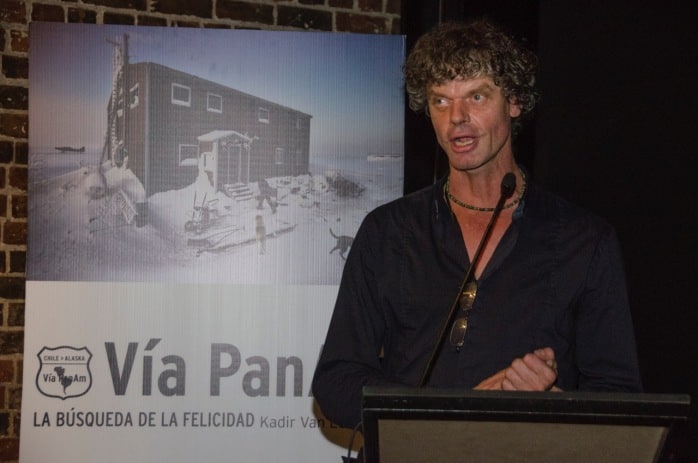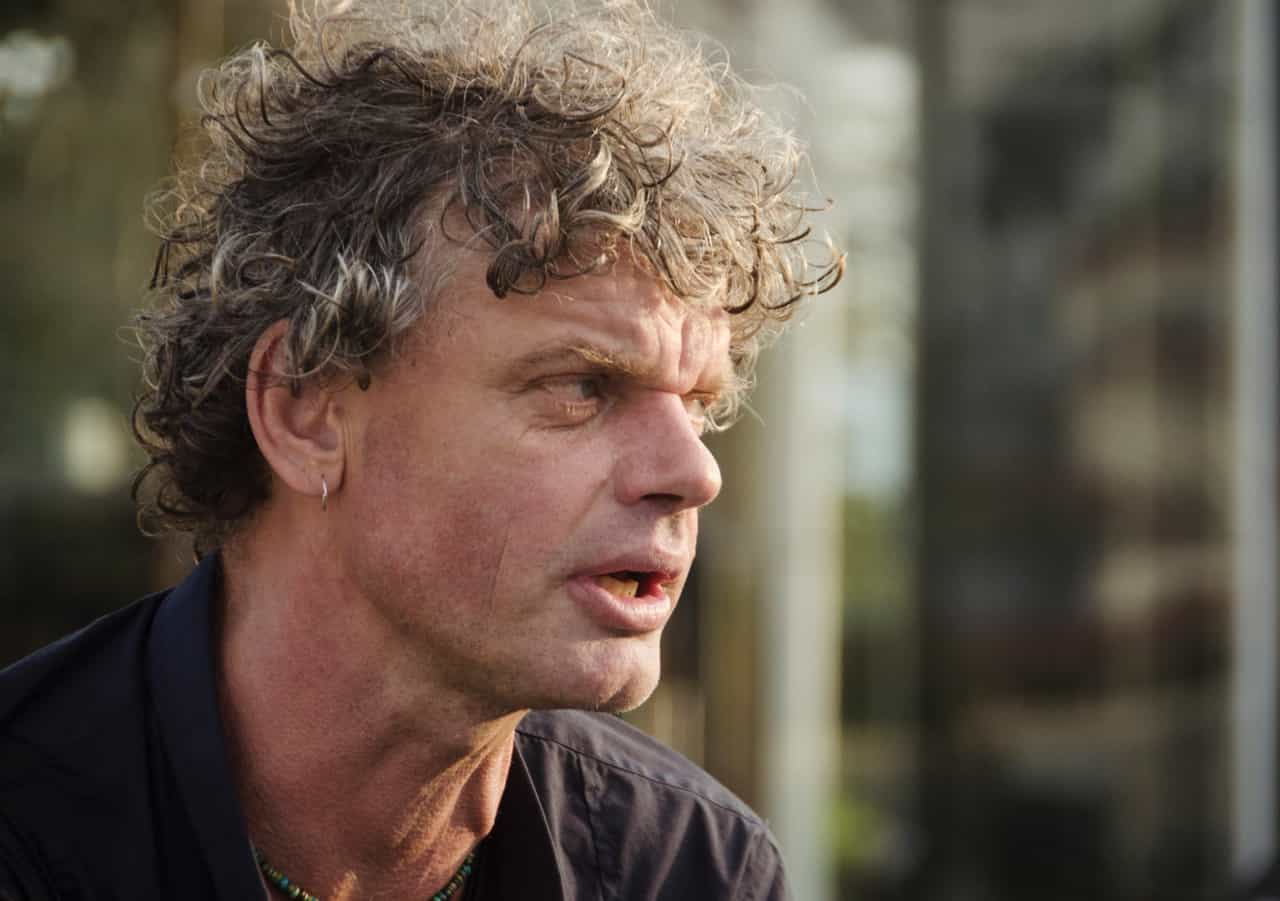For hearty trekkers, it sounds like a dream: Take a year to travel the entire length of the Pan-American Highway, from the tip of Argentina to the heart of Alaska. Take pictures and meet people as you go. Display your photographs and publish a book. What scruffy liberal arts student hasn’t shared this fantasy?
But Dutch photographer Kadir van Lohuises is not the dreamy type. A tall and skinny man with a weathered face and a mop of frizzy hair, Lohuizen is neither a romantic drifter nor hitchhiking beatnik, but a serious photojournalist. His tour de force, “Vía PanAm,” is a powerful chronicle of immigrants on the move.
“It has nothing to do with the Pan-American Highway,” said Lohuizen on Wednesday evening, a few minutes before the official opening of his “Vía PanAm” exhibit at the Antigua Aduana in Barrio Aranjuez. “I just needed to travel a road. It’s an investigation into the nature of immigration. Why do people move? Where do they go?”
Lohuizen started his career as a freelance journalist in 1988, and his career has taken him to war zones in Sierra Leone and the Congo. Lohuizen used his investigative skills to follow itinerant laborers and undocumented immigrants. He visited their houses and workplaces and followed them across borders.
“I thought I understood migration, but I didn’t,” Lohuizen said. “I assumed that immigrants were always moving north, toward the United States, but I quickly discovered that that was not true. If I had done it 10 years ago, it might have been true. But the first person I met who said he wanted to move to the U.S. was in Costa Rica. I traveled all of South America and did not meet a single person who wanted to move there.”
What was particularly provocative about Lohuizen’s journey was its family connections: He met immigrants in one country, then tracked down their families in another. This enabled him to see both sides of a given narrative. He noted that many migrants living in La Carpio (an infamous slum in San José) were living in worse condition than their families in their native Nicaragua.
“PanAm” is a large-scale solo installation and shows concurrently with the International Arts Festival. Large-format prints of Lohuizen’s photographs hang from wire, layering the room with images. The scenes are diverse – deserts, mountains, cities, farms, and even cottages encrusted in snow. Short video segments are projected against screens, and recorded interviews resonate in the industrial space. Photography fans will likely spend hours browsing his work.

The exhibit’s opening was well attended. The Dutch ambassador to Costa Rica introduced Lohuizen, who kept his comments brief. He then gave the microphone to one of his subjects, Douglas Antonio Contreras, a man from Nicaragua who lives in La Carpio.
“He’s a rapper,” Lohuizen said, “and he would like to perform one of his songs for you.”
Contreras performed his song in Spanish for five solid minutes, alternating between quickly spoken rhymes and a sung refrain. When he finished, the audience erupted with applause and cheers. Contreras’ ability and passion for his song echoed one of Lohuizen’s sentiments.
“It was truly incredible how willing people were to share their stories,” he said. “No one had ever been interested in them before. No one had ever asked them about their lives.”

